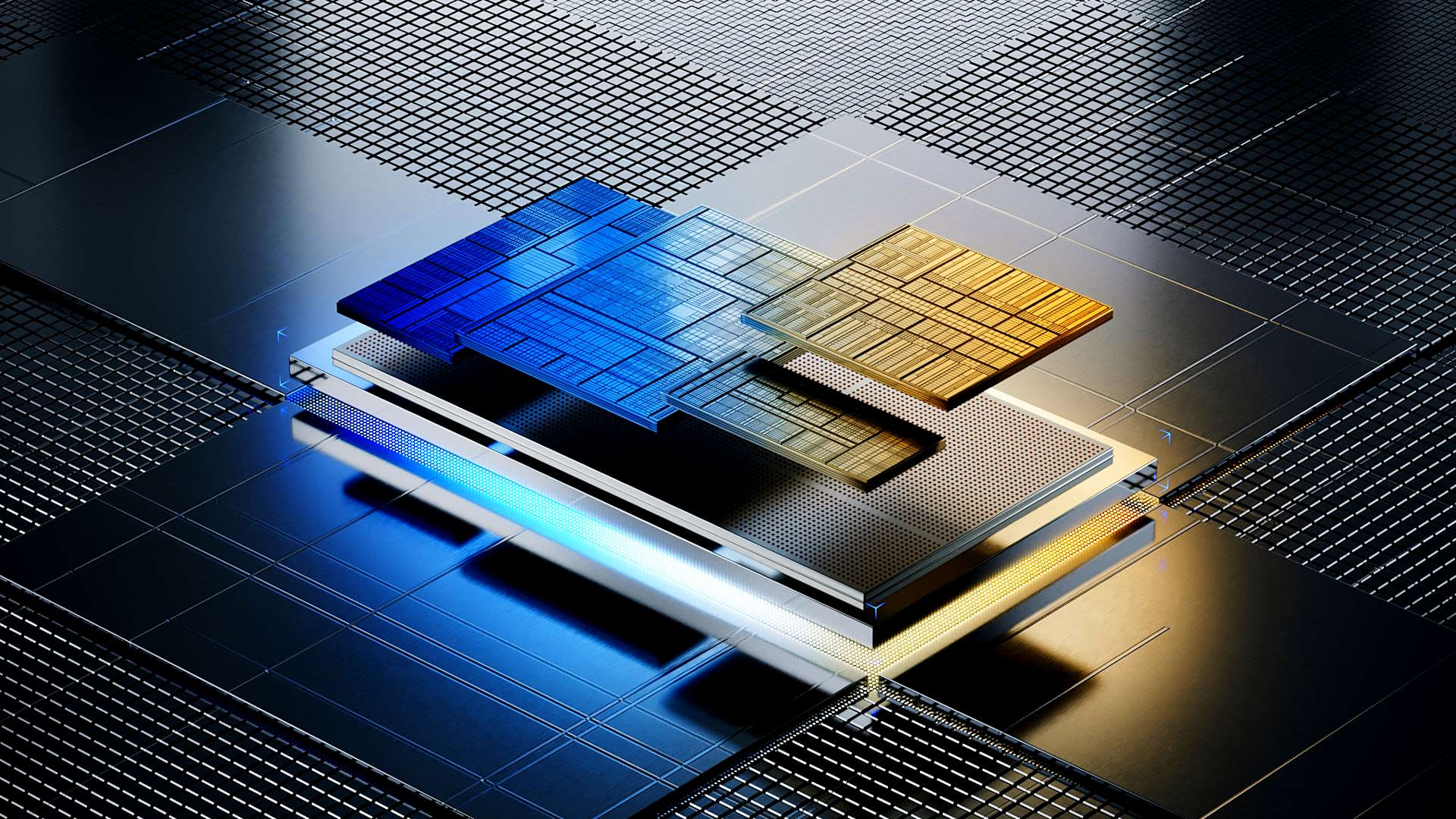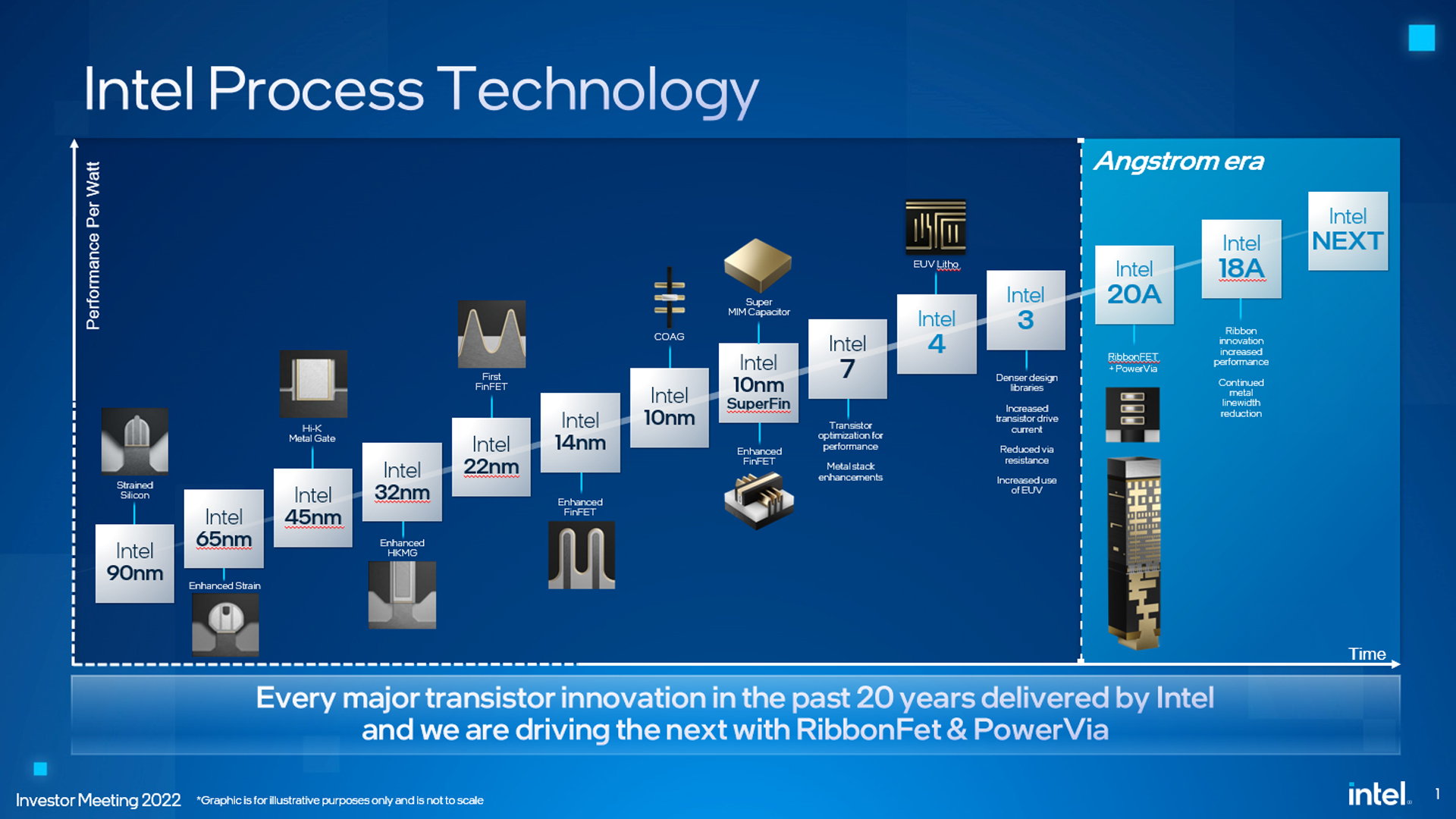'World's first gaming processor with an AI accelerator': Intel's Arrow Lake will be coming to desktop PCs in the second half of this year
I suspect AMD may have something to say about that claim, though.

This year's CES event has been utterly dominated by the constant talk and promotion of AI, and Intel's Client Computing keynote meeting was no different. However, executive vice president Michelle Holthaus did say that Intel's next CPU architecture for desktop PCs, codenamed Arrow Lake, is on target to hit the market in the second half of 2024. Oh, and it's the 'world's first gaming processor with an AI accelerator'.
Unfortunately, very little else was said about Intel's 15th generation of desktop chips but we already know several things about the design. The most important of which is that it's an expansion of the latest Meteor Lake design, where multiple tiles (compute, graphics, SoC, IO) are housed together with the Foveros packaging system.
It's a little like AMD's chiplet approach with its desktop Ryzen, Threadripper, and EPYC models, except there the chips are physically separated in the CPU package. Foveros involves stacking all of the tiles onto a common layer, reducing the lengths of the various chip interconnects.
Arrow Lake is also expected to be the first commercial product to be manufactured using Intel's 20A process node. This involves a significant change in the production of the silicon chips, switching from the FinFET (field effect transistor) design used for the past decade to a GaaFET (Gate-all-around) architecture, which Intel has dubbed RibbonFET.
Something else that will be new is PowerVia, better known as backside power delivery. This involves separating all of the input/output signalling connections and power lines so that the latter is applied to the back of the wafer. By doing this, chips should be able to run with slightly higher clock speeds and significantly reduce the level of internal voltage drop.

TMSC and Samsung will both be joining the GaaFET and backside power delivery bandwagons at some point soon, either late this year or some point in 2025.
We don't know much else about Arrow Lake, unfortunately, but I can make some educated guesses. Where Meteor Lake CPUs currently top out with six P-cores and eight E-cores, I suspect that Arrow Lake will launch with eight P-core, 16 E-core configurations and perhaps offer more as time goes on. I also expect that the graphics tile will be larger than that in Meteor Lake, either sporting more shaders or perhaps even a newer architecture.
The biggest gaming news, reviews and hardware deals
Keep up to date with the most important stories and the best deals, as picked by the PC Gamer team.
The one thing we know for sure that it will have is AI acceleration because that's all Intel pretty much talked about at the CES event. In Meteor Lake, the SoC tile contains an NPU (neural processing unit) that specifically handles calculations and data formats associated with machine learning operations.

Best CPU for gaming: The top chips from Intel and AMD.
Best gaming motherboard: The right boards.
Best graphics card: Your perfect pixel-pusher awaits.
Best SSD for gaming: Get into the game ahead of the rest.
Arrow Lake will have an NPU too, of course, but what about the claim that it will be the 'world's first gaming processor with an AI accelerator'? It's arguably Intel's first because the new Core Ultra series of chips isn't meant for gaming PCs, but I would say that it's not the world's first because AMD got there first, with its new Ryzen 7 8700G processor.
That was also launched at CES and should be available to buy towards the end of January. I suppose one can get all pedantic and argue that the 8700G is 'just' an APU but there's only one reason why you'd stuff as large a GPU as possible into a CPU, and that's for gaming.
Marketing shenanigans aside, I'm genuinely looking forward to seeing what Arrow Lake is like, especially what advantages (if any) Intel's 20A process node offers. The current 14th generation of desktop CPUs is rather underwhelming; massively powerful but also very power hungry. If that last aspect can be resolved with a new process node, Intel may well have a monster of a gaming chip on its hands.

Nick, gaming, and computers all first met in 1981, with the love affair starting on a Sinclair ZX81 in kit form and a book on ZX Basic. He ended up becoming a physics and IT teacher, but by the late 1990s decided it was time to cut his teeth writing for a long defunct UK tech site. He went on to do the same at Madonion, helping to write the help files for 3DMark and PCMark. After a short stint working at Beyond3D.com, Nick joined Futuremark (MadOnion rebranded) full-time, as editor-in-chief for its gaming and hardware section, YouGamers. After the site shutdown, he became an engineering and computing lecturer for many years, but missed the writing bug. Cue four years at TechSpot.com and over 100 long articles on anything and everything. He freely admits to being far too obsessed with GPUs and open world grindy RPGs, but who isn't these days?

